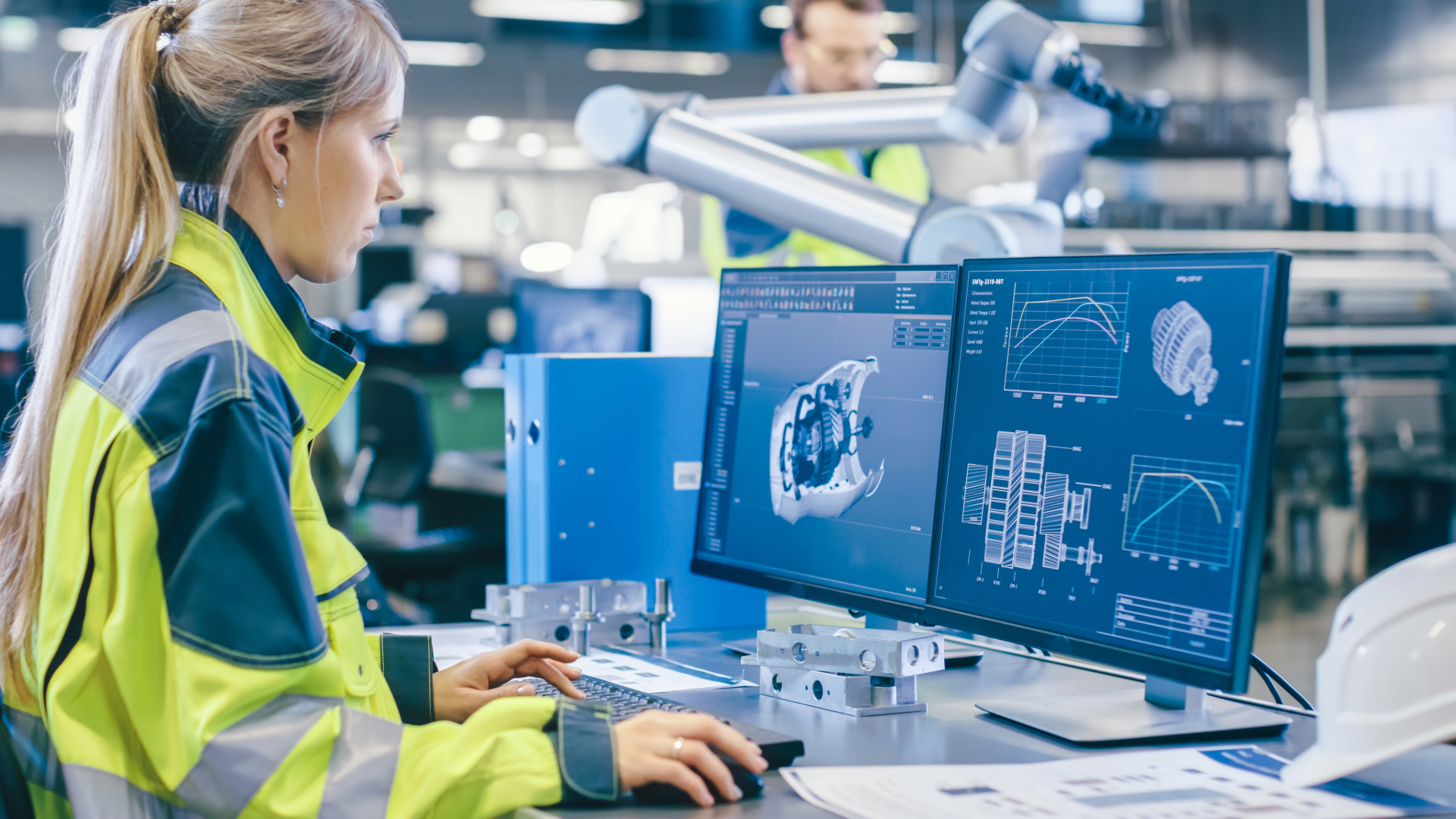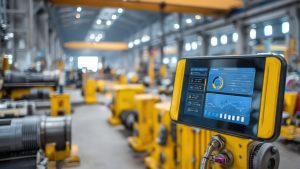Top Manufacturing Technologies Revolutionizing Industry Efficiency in 2024
There are many changes in the manufacturing panorama. The Top Manufacturing Technologies Revolutionizing Industry Efficiency in 2024 are making positive changes to the industry and increasing the speed at which it can implement and develop new ideas. This is more than simply keeping up with competitors; it is about destiny-proofing your operations. However, with so many concurrent improvements, it’s difficult to realize where to begin. Let’s discover some of the top manufacturing technologies revolutionizing industry efficiency in 2024 and their effect on businesses like yours.
Driving Forces of the Transformation
Why this sudden rush toward cutting-edge technology? Several factors are driving the need for enhanced efficiency. Manufacturers want more resilience. After the latest disruptions like the COVID-19 pandemic, having strong, adaptable procedures is crucial for survival. Top manufacturers appreciate this, as 90% are diversifying their supply chain resilience to encompass nearby and regional suppliers.
Attracting and maintaining a skilled body of workers is hard. With an outstanding 40% stop charge in manufacturing in 2023, training programs on my own might not solve recruitment challenges. This new wave of technology aims to enhance human skills, enhance staff improvement techniques, and enhance employee retention.
The last is government legislation that has fueled Top Manufacturing Technologies Revolutionizing Industry Efficiency in 2024. Major investments from acts like the Infrastructure Investment and Jobs Act (IIJA) and the CHIPS and Science Act are supercharging innovation. These legislative projects prioritize a virtual destiny for American production. The message is obvious: adapt now or fall behind.
Top Manufacturing Technologies Revolutionizing Industry Efficiency in 2024
1. The Power of Predictive Maintenance
Predictive preservation applies sensors, machines, and artificial intelligence algorithms to anticipate potential gadget disasters so that they will not pose harm. It’s about transferring from reactive fixes to proactive solutions. Think about it—your agenda is a normal check-up of your fitness; this is a health check in your crucial system.
Industry reports monitor that predictive preservation reduces system downtime by 30–50%, growing universal productivity. It additionally extends the lifespan of machinery, with studies displaying an increase of 20–40%—speaking about ROI.
2. Embracing the Smart Factory
A “clever factory” is no longer a futuristic fable. It’s here and swiftly changing how organizations prioritize product production techniques. In keeping with a current examination, an overwhelming 83% of manufacturers agree that those clever factories will revolutionize production in the subsequent five years.
A clever manufacturing facility weaves together advanced technology, synthetic intelligence (AI), 5G connectivity, cloud computing, and information analytics. This network of interconnected gadgets, through the Industrial Internet of Things (IIoT), creates a dynamic atmosphere, allowing for actual-time record evaluation and optimization at every production stage. From streamlined techniques to statistics-driven selection, the smart manufacturing unit allows a new stage of agility and efficiency.
3. Rise of Generative AI in Manufacturing
Generative AI takes facts and transforms them from easy data to actionable insights. It analyzes patterns to generate ideas faster and more accurately than human labor alone. It’s like having a highly skilled assistant who can crunch data points and devise solutions tirelessly.
Generative AI is a new tool to create more robust supply chains and sustainable processes while staying ahead of emerging trends and pivoting strategically. But this powerful technology requires an equally powerful infrastructure. Most manufacturers report they aren’t equipped to handle generative AI’s full potential. As more manufacturing companies grasp the benefits of smart manufacturing solutions that use generative AI, it’s clear they must invest now or risk falling behind.
4. Going Green with Sustainable Manufacturing
Consumers and investors need transparency and responsible enterprise practices, with ESG tasks at the forefront of most enterprise selections. Sustainability in manufacturing directly addresses government pressure. Manufacturing firms that align their operations with environmental goals avoid regulatory issues and unlock new incentives. In 2024 and beyond, we’ll see companies embrace this “green approach” more and more, incorporating it into every step of the process to become more climate-conscious industry trends.
Utilizing AI in manufacturing helps companies spot wasteful practices. It’s like spotlighting inefficiencies—from fabric use to electricity consumption. Top Manufacturing Technologies Revolutionizing Industry Efficiency in 2024 will play a pivotal role in an agency’s lengthy-term approach and everyday operations. Those that fully commit will experience greater cost savings while building consumer trust.
5. Breaking Barriers: The Shift from B2B to B2C
Because of the pandemic, how people purchase client items has been modified. Now, online direct-to-consumer sales are soaring. Companies are bypassing retailers to form direct relationships with consumers. Think about it like cutting out the middleman to streamline the production process and provide numerous advantages.
Selling products directly allows the manufacturer total brand control and pricing advantages. Most importantly, it creates a direct feedback loop with customers. Gathering data and understanding their audience’s needs firsthand empowers manufacturers to develop product portfolios that perfectly meet evolving market demands.
6. Collaborative Robotics: A Human Touch
Top Manufacturing Technologies Revolutionizing Industry Efficiency in 2024’s purpose is to enhance the team of workers, but it is no longer updated. Instead of seeing robots as an activity-stealing hazard, they’re increasingly considered a valuable tool for reinforcing human potential.
Think approximately collaborative robots—those “cobots” are designed to work thoroughly alongside human employees, mainly to expand efficiency for tedious or dangerous obligations. Collaborative robotics creates new possibilities, permitting a more secure and pleasing painting environment for the cutting-edge body of workers.
7. The Crucial Role of Cybersecurity
Imagine your factory blueprints being stolen or, worse, production being halted by hackers. It’s not exactly peak efficiency. In 2024, as technology reliance explodes, manufacturers must fortify themselves against such vulnerabilities. Digital infrastructure must become a priority as cyberattacks targeting factories and manufacturing systems become more sophisticated and frequent.
Top Manufacturing Technologies Revolutionizing industry efficiency in 2024 necessitates new techniques to protect highbrow assets. Access to sensitive data must be closely controlled, and manufacturing companies must take steps to secure the integrity of their systems. Proactive risk management and advanced digital security measures should be top priorities. Creating a digital shield guards against disruptions and strengthens overall manufacturing operations.
Challenges on the Path to Advancement
This move towards highly advanced technological solutions comes with obstacles that need addressing. Implementing sophisticated systems requires substantial investment. It’s not just about finances; companies must also invest in workforce development and training to navigate and maintain new processes and technologies effectively.
Many businesses will need an overhaul in their IT infrastructure to support Top Manufacturing Technologies Revolutionizing Industry Efficiency in 2024. Seamless integration between new systems and existing workflows can be challenging, and companies slow to replace legacy equipment will hamper optimization efforts.
Real-World Applications of Efficiency in Manufacturing
Look no further than BMW, which has started implementing “Figure” robots, humanoids designed to work seamlessly on their assembly line. Silicon Valley experts are confident these robots will handle most of the tasks in most warehouses in the next decade.
Data analytics and 5G speeds via MQTT Sparkplug connectivity allow manufacturers to make crucial decisions based on real-time insights. This translates to enhanced logistics management with reduced errors and the potential for lights-out manufacturing facilities with no on-site workforce.
Another noteworthy example of AI’s transformative power is in demand forecasting. AI models have proven incredibly successful at analyzing historical data, market shifts, and consumer behavior to provide hyper-accurate predictions. This creates seamless operations with fewer supply chain disruptions or wasted resources. In 2024, the most robust companies will use AI demand forecasting for superior operational control.
Conclusion
It’s undeniably an era of incredible change for the manufacturing industry. Navigating these advancements requires company leaders to be flexible and adaptable to maximize profit potential. The Top Manufacturing Technologies Revolutionizing Industry Efficiency in 2024—including digital twins, additive manufacturing, and industrial automation—are here to stay, whether your company fully embraces them or not.
Proactive adaptation to emerging manufacturing trends will define the most profitable companies of the next decade. As organizations strive for carbon neutrality, integrating innovative solutions enhances efficiency and aligns with global sustainability goals. Moreover, implementing advanced quality control measures ensures that products meet high standards, minimizing waste and maximizing customer satisfaction.
Neglecting those advancements carries a real risk of falling hopelessly behind competitors. Agencies can steady their position in a swiftly evolving panorama by staying knowledgeable and adapting to these technologies.



